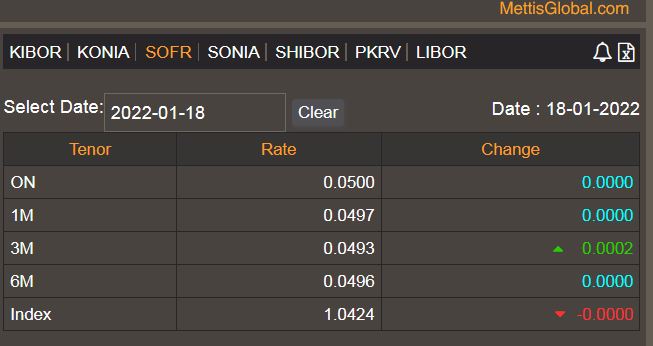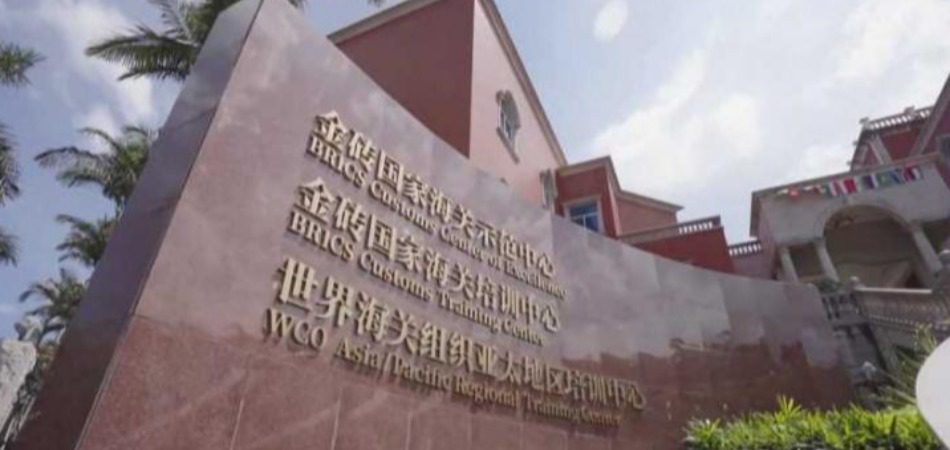New Year and New interbank reference rate

By MG News | January 19, 2022 at 09:50 PM GMT+05:00
January 19, 2022 (MLN): The New Year 2022 marks a much-anticipated market event following which, the London Interbank Offered Rate (LIBOR) has been phased out and been supplanted by Alternative Risk-Free Rates (RFRs).
The LIBOR, which had been served as the benchmark for borrowings, loans and derivative contracts for more than three decades was discredited after the 2008 financial crisis when authorities found traders had manipulated it, prompting calls for reform and eventual replacement of the smeared rate.
In the aftermath of the LIBOR scandal and the manipulation of this rate by certain market participants, regulators have decided to discontinue and replace such rates with RFRs which set in arrears and pay in arrears i.e., backward looking, meaning that the interest amount is known only at the end of the interest period. Whereas, LIBOR is set in advance and paid in arrears i.e., forward-looking.
So, which RFR banks and financial firms are using in place of LIBOR?
The Secured Overnight Financing Rate (SOFR) was announced as the recommended USD LIBOR replacement in June 2017 and has since been adopted in certain product areas (e.g., futures, floating-rate notes). SOFR rates for different tenors are available on the MG Link data portal.
SOFR is based on overnight Treasury transactions and is considered a risk-free rate, while LIBOR includes the credit risk of borrowing from a bank. As SOFR is entirely a transaction-based metric, it should be less vulnerable to market manipulation.
According to the report by Federal Reserve Bank of New York, the transition from USD LIBOR towards SOFR will put the global financial system on a more stable and enduring foundation, with a rate that is transparent, well-designed, and grounded in market transactions. The Alternative Reference Rates Committee (ARRC) plans to continue to monitor the transition to SOFR closely in 2022 and stands ready to continue its work in support of a smooth transition away from LIBOR.
Besides, among the remaining four LIBOR currencies, UK Sterling Libor will be replaced by SONIA, EURO LIBOR will be replaced by ESTR, Swiss Franc LIBOR will transition to SARON, Japanese Yen LIBOR will shift to TONA. They are all overnight rates, as they are measured by the volume of actual transactions.
At the end of 2021, LIBOR for Sterling, Euro, Yen Swiss franc and some US dollar tenors were ceased. However, heavily used tenors of US dollar LIBOR will be replaced by SOFR in 2023, nevertheless, phase-out has begun and the new use of US dollar LIBOR has also been banned from 2022. The extra time has been given to manage the contracts that are more difficult to transition.
Hence, the USD LIBOR transition is a major challenge ahead. In the second phase of the LIBOR transition journey, firms need to be prepared for the cessation of USD LIBOR on June 30, 2023, and their legacy US dollar LIBOR contracts by that date.
Moreover, market participants should be ready for new trading in RFRs only.
Copyright Mettis Link News
Related News
| Name | Price/Vol | %Chg/NChg |
|---|---|---|
| KSE100 | 132,765.93 82.84M |
-0.48% -637.26 |
| ALLSHR | 83,061.18 463.22M |
-0.15% -126.87 |
| KSE30 | 40,389.20 30.46M |
-0.65% -262.26 |
| KMI30 | 190,992.51 34.69M |
-0.57% -1091.40 |
| KMIALLSHR | 55,748.45 236.91M |
-0.18% -99.24 |
| BKTi | 36,238.41 4.77M |
-0.51% -184.47 |
| OGTi | 28,289.24 6.61M |
-0.52% -148.36 |
| Symbol | Bid/Ask | High/Low |
|---|
| Name | Last | High/Low | Chg/%Chg |
|---|---|---|---|
| BITCOIN FUTURES | 109,110.00 | 109,545.00 108,625.00 |
-105.00 -0.10% |
| BRENT CRUDE | 70.03 | 70.09 69.85 |
-0.12 -0.17% |
| RICHARDS BAY COAL MONTHLY | 97.50 | 0.00 0.00 |
2.05 2.15% |
| ROTTERDAM COAL MONTHLY | 106.65 | 106.65 106.25 |
0.50 0.47% |
| USD RBD PALM OLEIN | 998.50 | 998.50 998.50 |
0.00 0.00% |
| CRUDE OIL - WTI | 68.21 | 68.27 67.78 |
-0.12 -0.18% |
| SUGAR #11 WORLD | 16.15 | 16.37 16.10 |
-0.13 -0.80% |
Chart of the Day
Latest News
Top 5 things to watch in this week
Pakistan Stock Movers
| Name | Last | Chg/%Chg |
|---|
| Name | Last | Chg/%Chg |
|---|




